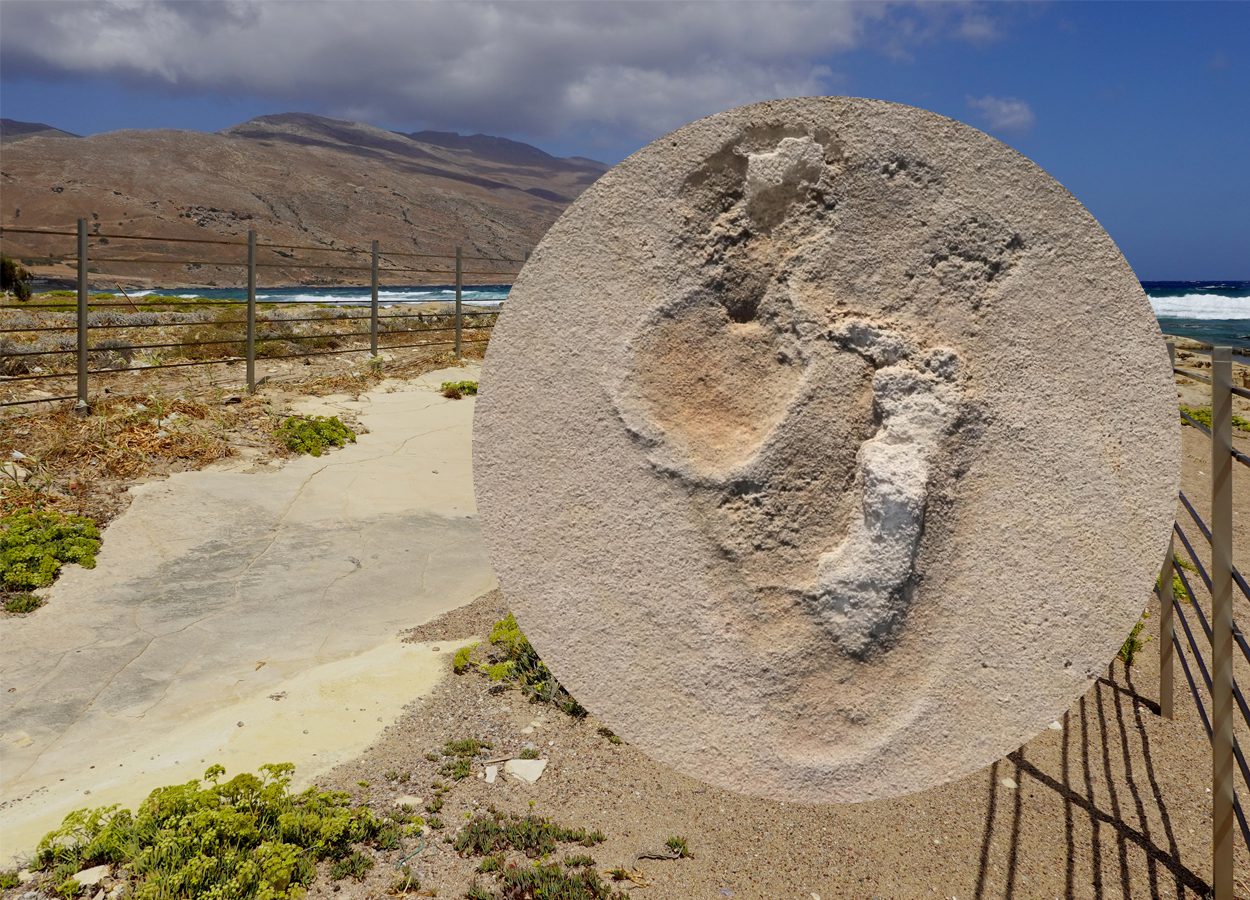Footprints left by pre-humans, dating back at least six million years ago has been identified by researchers on the island of Crete.
The discovery was made by an international team led by the University of Tübingen, where researchers found footprints in fossilised beach sediments near the Cretan village of Trachilos in 2017.
In a study published in Scientific Reports, the researchers used geophysical and micropaleontological techniques, now revealing the footprints to be around 6.05 million years of age, also making them the oldest direct evidence of a human-like foot used for walking.
Uwe Kirscher from the Senckenberg Centre for Human Evolution and Palaeoenvironment at the University of Tübingen said: “The tracks are almost 2.5 million years older than the tracks attributed to Australopithecus afarensis (Lucy) from Lae-toli in Tanzania.”
This places the Trachilos footprints in Crete at around the same age as the fossils of the upright-walking Orrorin tugenensis from Kenya (although finds connected with this biped include femurs, but there are no foot bones or footprints).
The Trachilos footprints gives new insights into the early evolution of human perambulation, with Professor Per Ahlberg from Uppsala University stating: “The oldest human foot used for upright walking had a ball, with a strong parallel big toe, and successively shorter side toes. The foot had a shorter sole than Australopithecus. An arch was not yet pronounced, and the heel was narrower.”
Six million years ago, Crete was connected to the Greek mainland via the Peloponnese. According to Professor Madelaine Böhme from the University of Tübingen, “We cannot rule out a connection between the producer of the tracks and the possible pre-human Graecopithecus freybergi.” Find out more
Header Image Credit : Background site of Trachilos – Olaf Tausch (adapted), CC BY 3.0 / Footprint – Per Ahlberg





